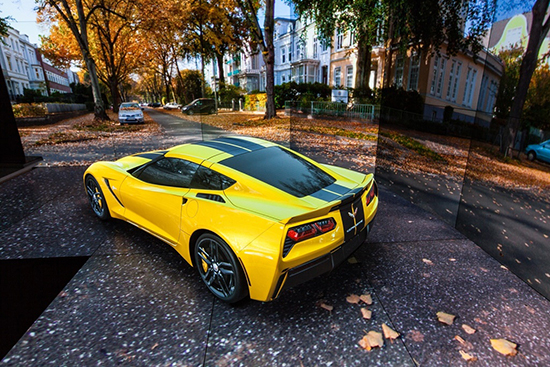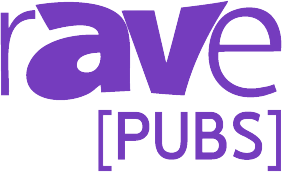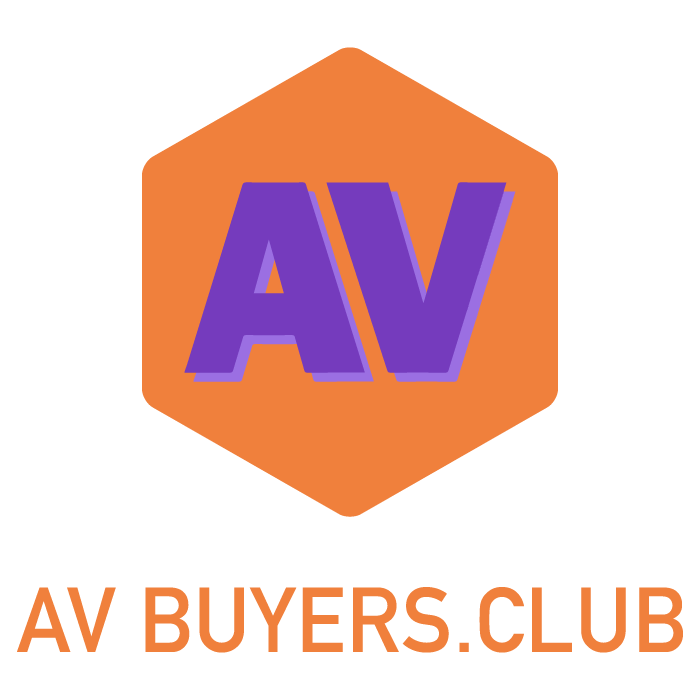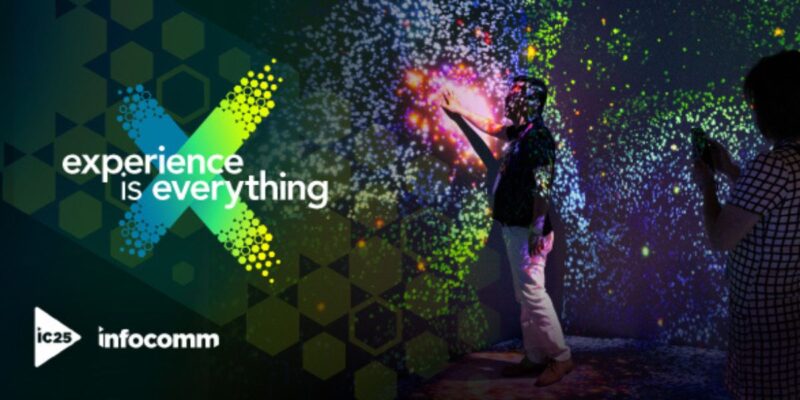Christie: Trendsetting and Trailblazing with Virtual Reality and Projection Mapping
Christie, a company historically known for high end display, video wall and projection technology is continuously doing something which can only be described by a singular statement — blowing your mind.
For those who may not yet be aware of what they do (that should be very few), Christie is a leading provider of high-performance projection displays, audio, simulation and visualization solutions for professional markets. Consistently setting the standards by being the first to market some of the world’s most advanced projectors and complete system displays, Christie is recognized as one of the most innovative visual technology companies in the world. I believe a good amount of the industry would agree with that statement, and after reading this blog, you will definitely have your eyes opened wider.
Before getting into the blog, take a look at Christie’s Corporate InfoComm 2014 video: Christie has all that jazz!
A Virtual Reality Case Study: The AGCO Company
The new virtual reality center installed this year at AGCO Corporation was inspired by the initial VR center installation at the Fendt Company, a manufacturer of agricultural machinery for over 80 years (located in Marktoberdorf in the Eastern Allgäu, a southern region in Germany) which is today owned by AGCO Corp. The Fendt VR center has been in operation since February 2012, the media technology was installed by the VISCON company. The installation was done with two 35,000 ANSI lumens Christie D4K35 projectors; on a 5×2.6 meters (16’5″x8’6″) large passive stereo powerwall, CAD models of various agricultural machines are visualized. The two 3-chip DLP 4K projectors provide a resolution of 4096×2160 pixels. The objective of the virtual reality system is both the improvement of product quality as well as cost optimization. Fendt is one of the first users in Europe to use two projectors of this type built into a passive stereo unit. These projectors use Infitec filter technology and an advanced realtime tracking system (ART), projecting onto a large Stewart rear projection screen. The projectors have proven themselves in operation with their reliability and homogeneous image quality.
Currently, the AGCO Corporation is using Christie 4K high frame rate (HFR) projection to light up its 3D virtual reality powerwall at its engineering facilities in Jackson, Minnesota. Impressed with the Fendt system’s results and utility, AGCO decided to expand its program to North America. The new powerwall in Jackson utilizes two Christie D4K3560 3-chip DLP 4K projectors running at 60Hz, with TechViz’s 3D visualization software technology and ART tracking system, to display images of agricultural machine models in stereoscopic 3D onto an 8′ by 16′ glass screen. Christie performed the site survey and full design, as well as the integration and installation, providing a “one-stop shopping” solution. The core functions of the system are to achieve optimal product quality and reduce costs by streamlining product development. AGCO also plans to use the powerwall for manufacturing and assembly training purposes, as well as servicing and marketing, attesting to the versatility and value of the solution.
“The powerwall has become an incredibly instrumental and useful part of our engineering process,” said Joseph Black, senior business analyst, AGCO Corporation. “By reviewing the models virtually we are able to catch interferences, perform clearance checks and fix engineering designs ahead of prototyping, allowing us to create fewer prototypes before the final product is ready. Ultimately, we hope the powerwall will not only help us reduce costs, but build the best farming equipment possible.” The TechViz XL software enables the display of virtual prototypes in real time without data conversion, and the use of a wide range of applications. The Christie D4K3560 3-chip DLP projector features full 4K resolution and 35,000 center lumens running at a high frame rate of 60Hz. Built on the Christie TruLife electronics platform, it delivers superior brightness, smoother video, and vibrant, life-like images.
AGCO Corporation’s new powerwall has also succeeded in encouraging collaboration among employees and divisions by supporting communication through visual presentation. In addition to the individual operating the wall, 3D glasses are available for all of the observers in the room. This allows teams to gather and perform group analysis and work together on innovative new ideas. The powerwall screen, made up of a single sheet of durable glass, provides a much clearer image as compared to soft white screens.
The powerwall VR software integration was performed by TechViz, a world leading developer and provider of advanced visualization solutions for 3D applications. TechViz XL — the driver and its options — is the software tool that allows going beyond the desktop workstation, to display virtual prototypes in real time, directly from a 3D application into a virtual environment without data conversion. In short, the AGCO Corporation’s powerwall is an integration of highly precise form and function allowing for high level construction and collaboration in the realm of manufacturing.
Note: When the new AGCO customer video is available it will be posted on Christie’s website.
Projection Mapping: Buying Your Next Car May Include an Augmented Reality Experience
At SIGGRAPH 2013, Christie, NVIDIA and 3DXCITE (formerly RTT) collaborated on a proof of concept car configurator. The augmented reality configurator uses projection mapping technology on a physical 3D model to show how car customizations can be displayed in real time.
At this year’s InfoComm, the centerpiece of the Christie projection mapping pavilion was a demo of the mature Christie Design Studio (here is a video of the company’s Design Studio Interactive projection mapping showcased at InfoComm 2013). The Design Studio features a one-fifth scale model of the exciting new Corvette C7 Sting Ray resting within a diorama constructed of Christie MicroTiles. With Christie G-Series projectors bringing the Corvette C7 Sting Ray to life through projection mapped photo-realistic graphics, interacting with a 22” touch panel, users can instantly change the appearance of the car by exploring all the design selections available for personalizing the real car. This isn’t just a demo, it’s a tool that you might see in dealerships soon.

Christie achieves the effect using a custom car configurator developed in collaboration with 3DXCITE — real-time, high-end visualizations for powerful product experiences, and Ventuz -real-time graphics content creation, authoring and playout control software. Built on top of 3DXCITE DELTAGEN software, the same tool many automakers use for digital review of new car designs, this tool pulls in actual automakers’ data in order to provide a richly detailed and product accurate visualization of your custom Corvette. Driven by a large computer cluster, this Interactive Design Studio v2 is a real-time graphics demonstration, with graphics being rendered on the fly based on the user’s input allowing for infinite variations in car customizability.
To “apply” paint, wheels and the like to the Corvette 1:5 scale 3D printed model (provided by Hyphen Services, owned by Christie), Christie uses unique projection mapping software called Christie Twist to create what’s called a warp mesh — a 3D mesh that matches the physical shape of the screen, in this case the 3D shape of the car’s body, and shrink wraps the graphics onto the surface for perfect alignment. Leveraging Christie Twist for warping and blending, on an NVIDIA GPU enables the system to create each displayed video frame and de-forms it so it wraps onto the body of the car. Images from multiple projectors are combined to get a seamless rendering of the car, which is viewable from all angles. To add further realism, the software renders the selected reflections of the background onto the car.
While this may sound complicated to pull off utilizing highly sophisticated technology, the fast interactive processing and speedy rendering makes it exceptionally easy for the customer to experience. Easily deployed in any environment, the Christie Design Studio concept can be used in many settings beyond the auto industry, including retail where clothing can be mapped onto mannequins or where an infinite number of style choices can be mapped onto a shoe. An architectural firm could bring a proposed building model to a meeting and use projection mapping to show the customer how shadows and light will appear at different times of the day or year. A museum could have a large stock of 3D-printed copies of artifacts that could be brought to life by placing them into the projection field. Christie continues to make projection mapping more accessible and easy to use for customers and markets.
Designed To Inform and Inspire
Christie’s projection mapping Book of Transformations provides amazing visuals and technical details on scores of projection mapping projects done around the world using Christie projectors and complementary enabling technologies. It is available as a free downloadable app for iOS devices, Android devices, and as a PDF file. I encourage you to take a look.
One of their other inspiring publications is the Book of Shapes. Showcasing digital creativity from around the globe, The Book of Shapes presents a unique collection of almost 70 display wall projects that have each explored shape through the Christie MicroTiles technology.
I have to say that this has been a terrific experience for me to write this blog which is wholly different from those that I have written before. Can I characterize this technology as disruptive? Well, why not? I consider it off the charts technology that can certainly shake up the industry. And while there will be many revolutionary technology solutions brought by Christie to next year’s InfoComm, there can only be one way to characterize each and every one of them — nothing short of mind-blowing.





